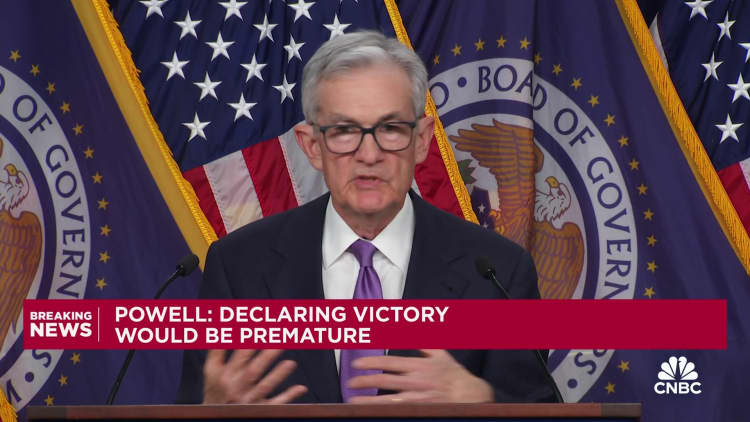Asia-Pacific equity markets ended mostly mixed Thursday, with investors digesting the U.S. Federal Reserve's move to end its interest-rate-hiking cycle and signal cuts for the next year.
Optimism earlier in the session spilled over from Wall Street, which rallied as the Fed held rates at 5.25%-5.5% for a third straight time and laid out the timeline for at least three quarter-percentage point cuts in 2024 and beyond.
Forecasts for the core personal consumption expenditures price index — the Fed's favored inflation gauge— have also been pared back by the Fed to 2.4% in 2024 and 2.2% in 2025, down from 2.6% and 2.3% respectively in its previous forecasts.
In Australia, the S&P/ASX 200 was up 1.65%, hitting levels not seen since Aug. 1 and closing at 7,377.9.
Japan's Nikkei 225 closed 0.73% lower at 32,686.25, while the Topix slipped 1.43% to close at 2,321.35. The financial sector led declines in the region as investors in Japan awaited the Bank of Japan's policy decision next week.
South Korea's Kospi was an outlier on the day, popping 1.34% to close at 2,544.18, while the small-cap Kosdaq added 1.36% to end at 840.59.
Hong Kong's Hang Seng index rose 0.85% in the final hour of trading, while China's CSI 300 index ended 0.52% lower at 3,351.96.
Overnight in the U.S., the Dow Jones Industrial Average hit record levels, gaining 1.4% and marking the first time the benchmark closed above the 37,000 level — breaking a previous record set in January 2022.
The S&P 500 jumped 1.37% and crossed the 4,700 mark for the first time since January 2022, while the Nasdaq Composite climbed 1.38%. All three major averages hit fresh 52-week highs.
— CNBC's Sarah Min and Brian Evans contributed to this report.



